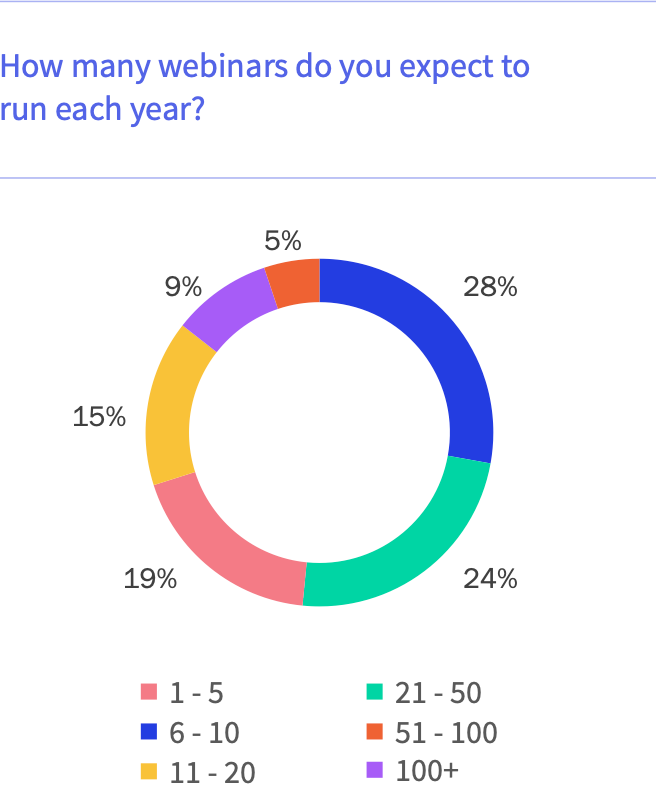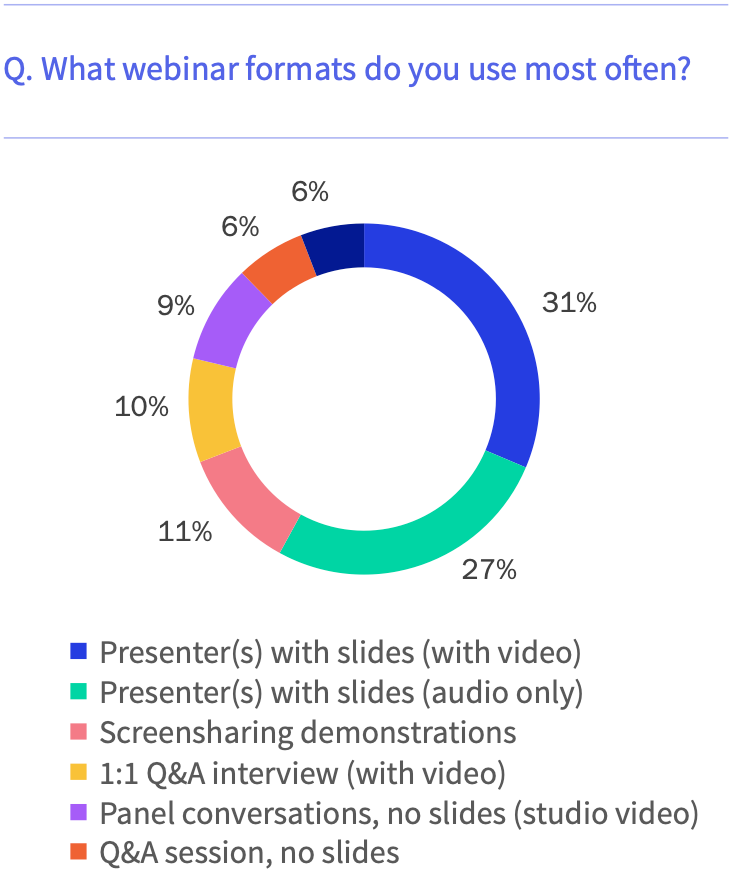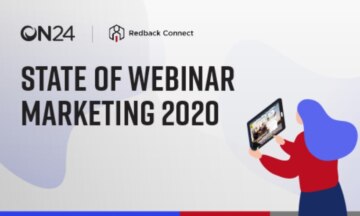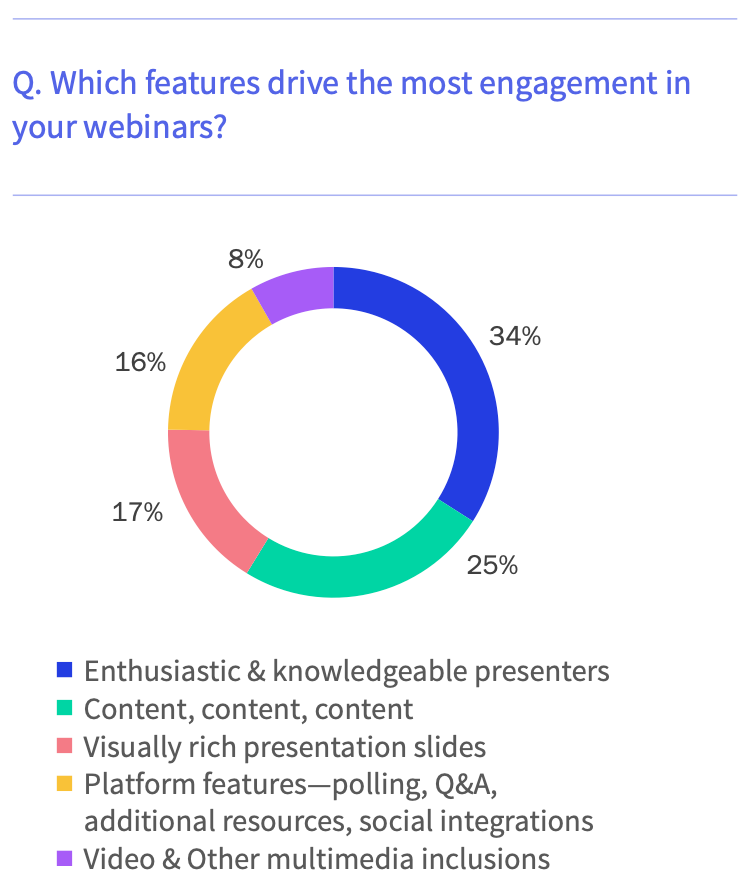Do you remember the first webinar you ever participated in? It was probably a narrated slide deck with buffering issues that ended with a pretty hard sales pitch.
Thankfully, today’s webinars are far more sophisticated. Webinars are still being used to drive sales for businesses, but marketers see their value for a variety of other purposes including educational components, geographical reach and cost-effective participant engagement.
Because of webinars’ growing popularity, we wanted to share our State of Webinar Marketing Report so you can see how your program compares to industry standards. We teamed up with managed webinar provider, Redback Connect, to help marketers raise the bar and make sure webinars remain interesting and effective for all involved.
The State of Webinar Marketing Report is filled with useful information about who uses webinars and how they use them along with information about how to increase engagement and measure success. You should definitely check out the entire webinar, but we want to highlight a few important areas for you now.
Webinar Use in Australia

Like popular podcasts, newsletters, and other branded content, high-quality, consistent webinar programs attract and grow an engaged audience over time. Overall, marketers in Australia are seeing results with webinars as 9 in 10 identify webinars as a “key part” of their marketing and communications strategy. We’ve also seen trends shift away from one-off webinars.
More than three-fourths of respondents (81%) now run six or more webinars in a year and 38% are heavy users, running more than 20 in a year.
Of the more than 20 business sectors represented in the survey, there are two main industries that commonly use webinars as part of their marketing strategy. Financial services are the heaviest user of webinars, representing 16% of all webinars, a four-point increase over the prior year. The education sector has gone up in cadence as well and now accounts for 12% of webinars. Other popular industries include software and healthcare.
The Ideal Webinar Presenter

Nothing is more important for a webinar presenter than passion and enthusiasm. For the past three years, the Redback Report on webinar audiences found the lack of engagement as the top reason attendees leave a webinar early.
Audience engagement is closely tied to the presenters’ enthusiasm, so much so that attendees rate the presenter as being more important than the content and the platform features. This means the ideal webinar presenter is both knowledgeable about the topic and comfortable presenting online. In fact, 34% of respondents say that enthusiastic and knowledgeable presenters drive the most engagement in webinars — ranking higher in importance than the content itself (25%).
Knowing all of this, it is not surprising that 54% of respondents say they have at least two presenters in their webinars, and another 52% of respondents say they source their presenters internally.
How else can an organization source presenters? Looking outside an organization helps, with 13% of respondents saying they use their personal network to source presenters and another 2% say they lean on customers. All in all, one in three organizations use a combination of internal, personal and customer to source webinar presenters.
Increasing Engagement In Australia Webinars
Along with an enthusiastic presenter, the content and supporting materials of a webinar, such as slides and video content, are vital to retaining audience attention. The more you can do to engage your audience, the better the webinar.
So it should be no surprise that video has finally overtaken audio as the most popular webinar format, with 31% of respondents saying they prefer video to audio. However, this doesn’t mean audio-only webinars are old news — in fact, 27% of organizations say they use slides and audio-only format in their webinars. Other popular webinar formats include screen-sharing demonstrations (11%), one-on-one Q&A interviews with video (10%), and panel discussions (9%) or other Q&A sessions without slides (6%).
This shows a gap and an opportunity to differentiate your webinars from the masses by employing other formats that are more likely to increase engagement. Webinars with interviews, panel discussions, debates and other live conversations are underutilized given their propensity for stronger audience interaction.
To learn more about how webinars perform in Australia, check out our on-demand webinar here.

